
Hiking Dude Blog
2025 2024 2023
2022 - Nov Oct Sep Aug
2021 2020 2019 2018 2017 2016 2015 2014 2013 2012 2011
08/30/2022
Not long after leaving the crabshack on the ferry boat across the Nitinat Narrow to continue our northbound hike up the West Coast Trail, Kelly slipped on a very muddy uphill step. She landed right on a hiking pole and SNAP! the carbon fiber shattered.
Not long before that, I had slipped on a root and my ankle landed on my aluminum pole, bending it so it would not longer collapse. So, aluminum poles bend and fiber poles break.
Between Tsusiat Falls and Michigan Creek campsites, the West Coast Trail crosses the Kanawa River. This is a proper river with plenty of depth, width, and current - not like a little creek you can wade through. Fortunately, it also has a wonderful cable car to carry hikers across.
We sent two of us across with packs, then a 3rd with two packs, then Kelly and I with our 3 hiking poles and the last pack (and her broken one stashed away in the pack). It all went well until the very end.
This video shows our crossing...
Open video in Separate View
So, aluminum poles sink and fiber poles float.
Things like this happen all the time on the trail. We found (and carried out) broken poles, tips, and baskets, a shoe, clothing, and quite a lot of other dropped things, but very little trash like wrapper pieces on the trail. Some people might just leave the 'lost' items in the river, but that doesn't seem right and we really needed the poles to put up our tarp tent.
You can read more about our Kanawa crossing and our whole hike in my West Coast Trail Journal.
But, seriously, I prefer aluminum hiking poles over carbon fiber, and here's why:
- Aluminum is much less expensive (like $20 vs $100).
- Aluminum can take much more abuse before breaking, and has a longer lifespan of rough use.
- Bent aluminum can often be bent back to use a bit longer.
- Aluminum is not as sensitive to extreme cold and heat - especially becoming brittle in extreme cold.
- Aluminum can be recycled if the pole does become unusable.
If you decide to give hiking poles a try, take some time to learn to use them before going on a long hike. Some things to consider:
- Use the wriststrap correctly. Put your hand in from the bottom so your hand encircles both the wriststrap and the grip. This saves a lot of hand and wrist fatigue.
- Remove rubber tip guards and baskets. This reduces weight and prevents them from being lost on trail - I've lost count of the tips I've found along the way.
- Figure out your cadence between feet and poles. Typically, the pole on the left should touch the ground forward at about the same time as the right foot.
Hike On!
Posted: 08/30/2022
08/18/2022
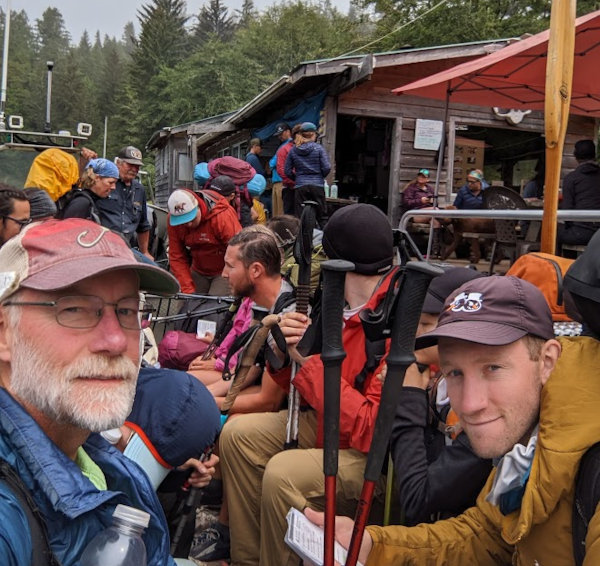
My long hike of the Pacific Northwest Trail was the most isolated, as we met only a handful of other hikers over 1,000 miles. The West Coast Trail is definitely NOT isolated in that way! Of all the trails I've hiked, the WCT easily had us encountering the most hikers each day, even more than the Appalachian Trail.
Not many people actually hike long distances. The 2,200-mile Appalachian Trail only sees around 4,000 hikers attempting thru hikes each year, and the 1,200-mile PNT has more like 70 annual thru hike attempts. The 50-mile WCT gets from 5,000 to 7,000 thru hikers each year. So, from a hiker per mile per day perspective, the WCT is VERY CROWDED!
On any given day during the hiking season, there will be up to 25 people starting from both the north and south ends, and 20 from the middle going north or south. The day you start, there will be about 30 people starting to hike towards you. 30 people started the day before, and 30 the day before that. So, you should expect to cross paths with about 30 people each day, and that is about what we experienced.
We met a group of 8 men, a family of 5, many couples and threesomes, and a few solo hikers - all going in the opposite direction. It seemed that we always met them either in the middle of a muddy bog, or halfway up or down a series of ladders. Of course, this makes sense since these are choke points that take extra time and effort to get past.
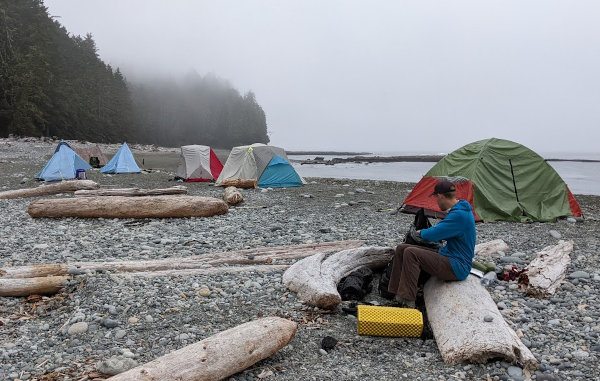
Even more so than on-the-trail, you'll notice the people at campsites. Since nights are spent at designated sites on the beach, those 30 people fill up the areas with a couple dozen tents. When you're used to plopping your tent down on any flat spot out in the wilderness, this is a big change.
We tended to start hiking early in the morning which meant we were often one of the first groups to arrive at campsites. Rather than taking a prime spot with easy access to the bear boxes, outhouses, water source, and trailhead, we set our shelters up far away from where we envisioned the majority of others would like to camp. This is just trail etiquette to allow those that may of had a hard day hiking to find a nice place.
We also preferred to be apart from the noise and activity around the many campfires that were built each night. For the most part, it worked out well, but I expect we would not win any 'life of the party' award.
Of the 100+ people we interacted with on the trail, there were none that were anything but friendly and considerate. Maybe it's a Canadian thing, but I got no 'entitled', 'weird', or 'sketchy' vibes that sometime crop up on other popular trails. We did meet a few folks that made the trek special...
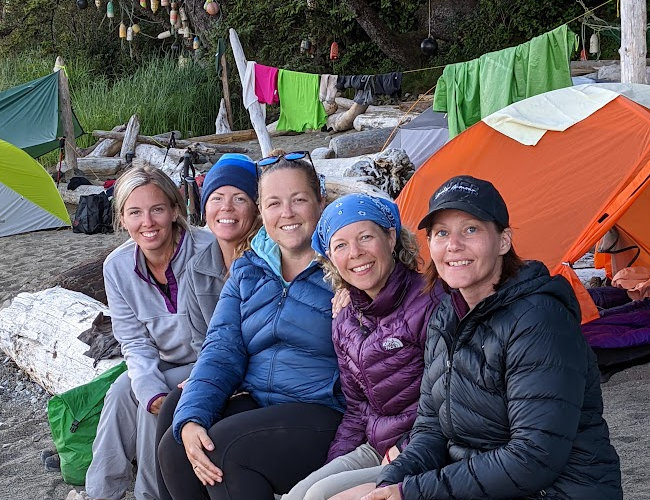
The ladies above (Erin, Candice, Amanda, Shannon, Ericka) followed the same itinerary as us. They did not all hike together through the day, but every afternoon or evening they eventually arrived at camp. Over the days, it was enjoyable to hear about their adventures, including getting lost, bushwhacking, and falling in mud. Pretty much every other obstacle you may hear about this trail seemed to happen to one or another of them at some point, but they persevered and fared as well as most.
One hiking pair that rode the shuttle bus with us was a father and young son. They were excited to hike, but after our boat ride with them across the Gordon River, we never saw them again. We got word on the second day that the dad had a boot blow out on the first day so they had to turn around and leave - hopefully, he fixed it and did a reboot (get it?).
Others from that original group would leap frog with us over the next days. One Canadian fellow had hiked the trail a couple times and shared a lot of information from his past experiences.

Upon reaching the northern terminus early in the day, we were greeted by a Trail Guardian, someone that maintains the trail, helps hikers, and shares local culture. My wife asked him if he'd take our group photo which he eagerly did, and surreptitiously got a couple of himself in as well. This is Kevin, whom I later learned is pretty well-known on the trail since he's been working on it for over 23 years now.
This year, Kevin has been sharing salmon with hikers that arrive at the terminus on Thursday afternoons - we missed it. He is also part of a crew responsible for the northern 25KM of the trail - there are 3 such crews, breaking the trail into three 25KM sections. It was a joy to chat with him for quite some time while he sharpened his chainsaw.
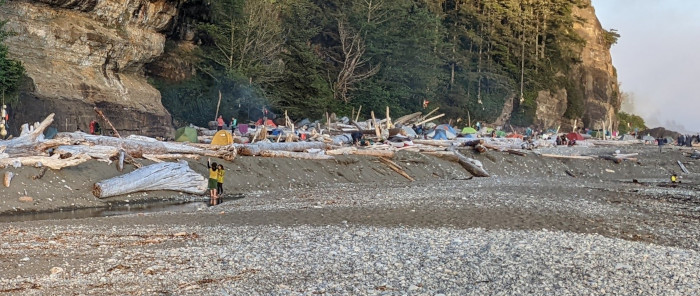
There were more women than men hiking the WCT during our time on trail. The last person we met on trail was at about kilometer 3, and she was a spitfire just heading south all by herself. All smiles, enthusiasm, and energy, with a small, light gear setup. I have no doubt she cruised down to the Gordon River without a care.
I noticed the diversity of hikers, too, and it was refreshing. On the long trails I've hiked, the typical hiker is a lean white male. The WCT is exceptionally different from that with a wide range of skin colors, body sizes, ages, and even languages. I heard English, French, Japanese, and Spanish (I think).
It seemed to me that the general 'vibe' on the WCT is more easy going than on longer trails. There was not a drive to cover many miles. Taking time to experience the widely ranging trail conditions and varying scenery was a nice luxury. Having a few hours to lounge around after hiking a few miles each day gave it more the feel of camping than hiking. I suppose the shorter trail length and commitment of just a week rather than a month or more had a lot to do with this.
I'll share what our camp life was like on the WCT in a couple days...
08/03/2022

OMG, what a hike!
I just got back from a family backpacking trip - myself, wife, two sons, and a girlfriend. Seven days of hiking and camping on the West Coast Trail of Vancouver Island, British Columbia, Canada was a wonderful week in the wilds. I finished my trip report, but wanted to share a few pictures now.
The trail has plenty of ladders...
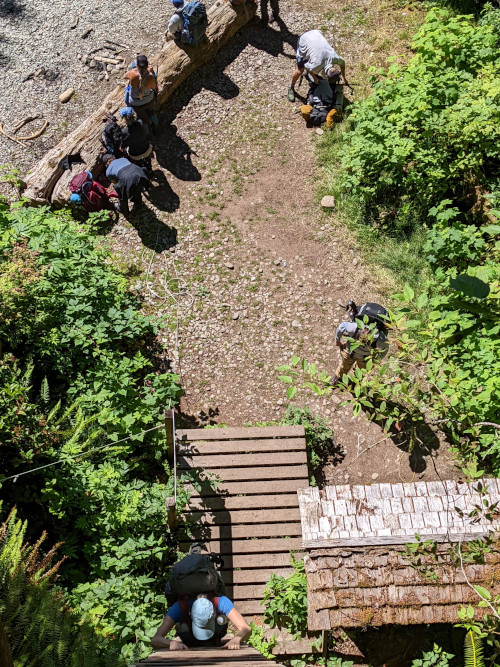
First (and steepest) Ladder right at the southern trailhead.
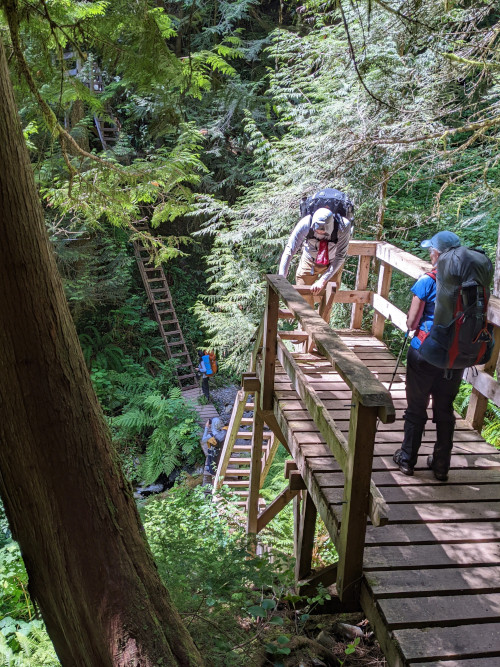
Ladders Going Up and Down

Ladders Upon Ladders
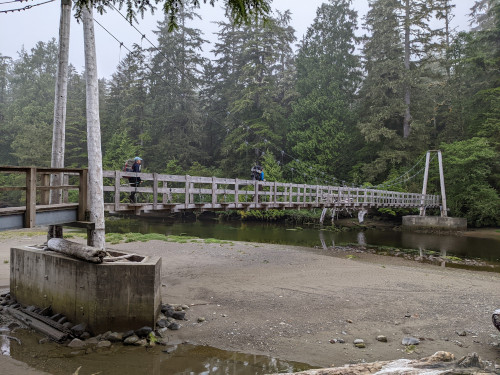
Nice Bridge Across River
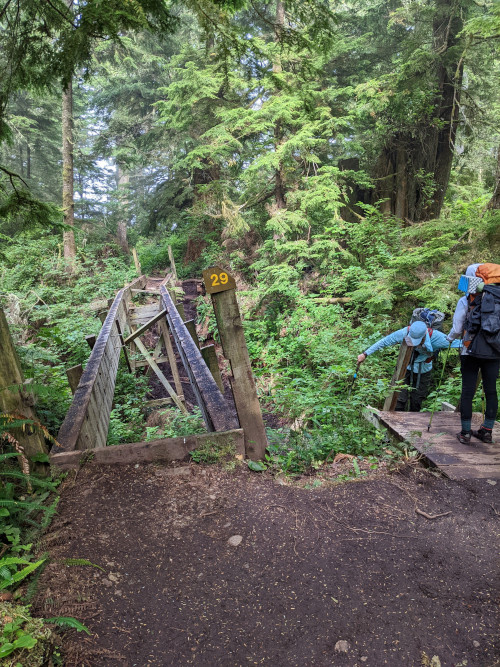
Not So Nice Bridge
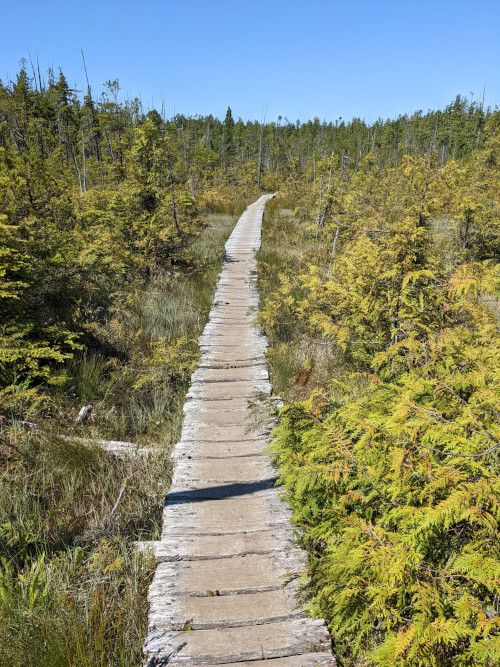
Nice Boardwalk
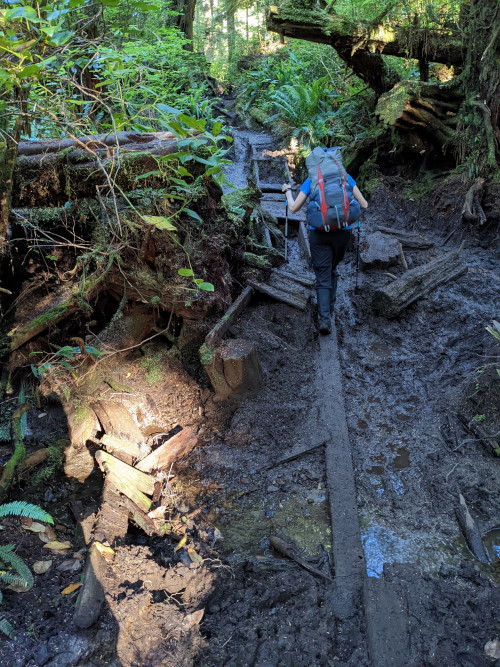
Not So Nice Boardwalk
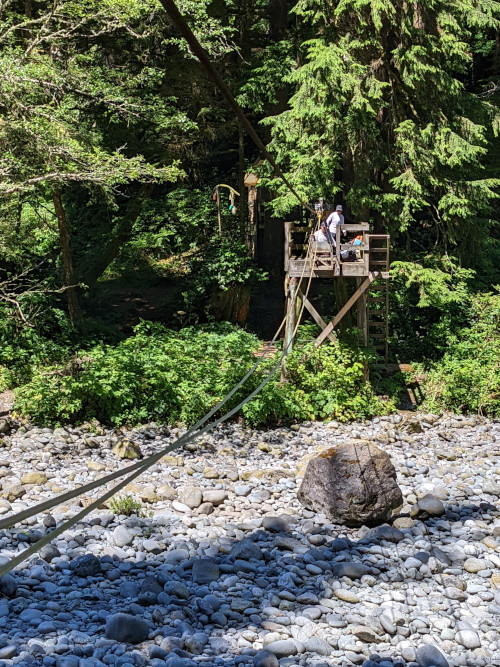
Cable Cars Are Fun
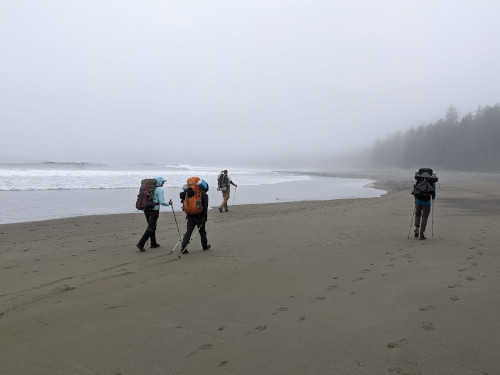
Easy Beach Walks

Not So Easy Rock Scrambles
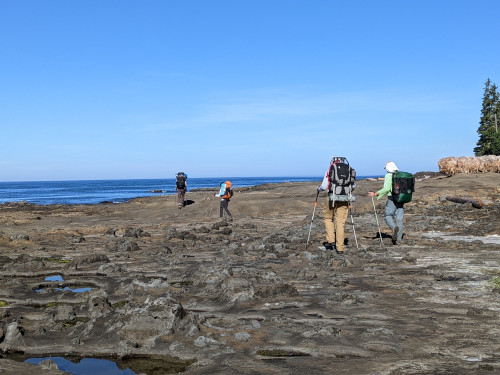
The Trail was Flat...
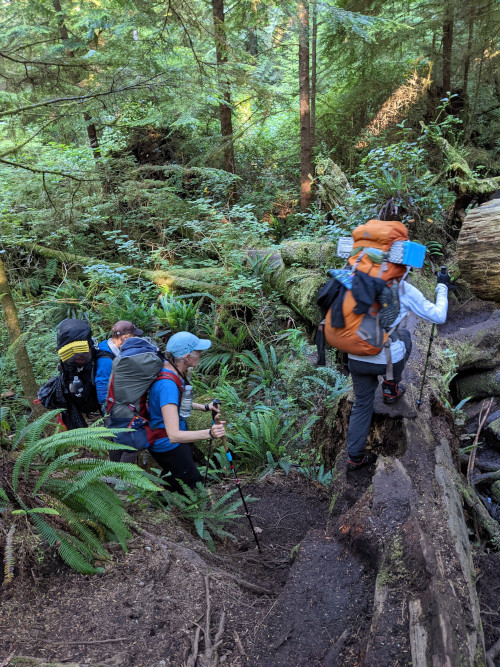
And Not So Flat
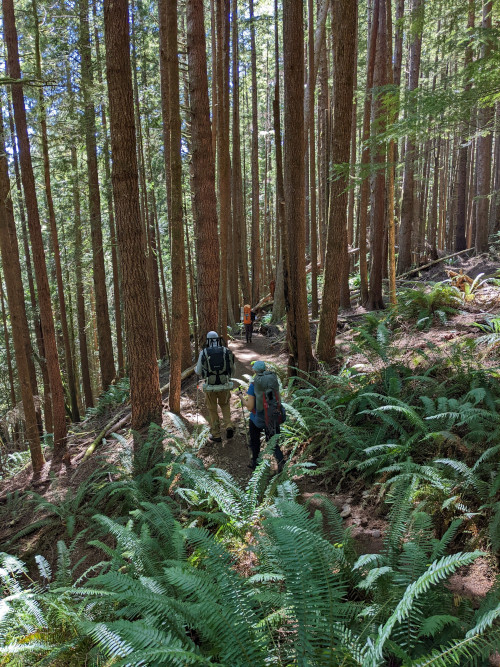
Beautiful Forest...
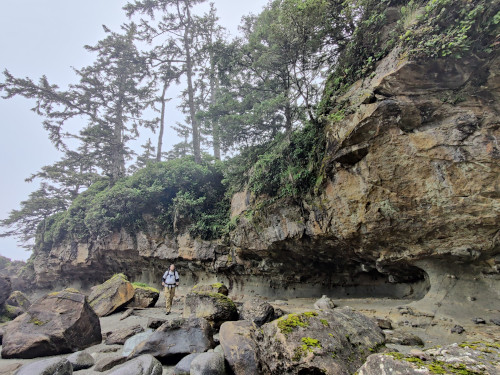
and Coastline
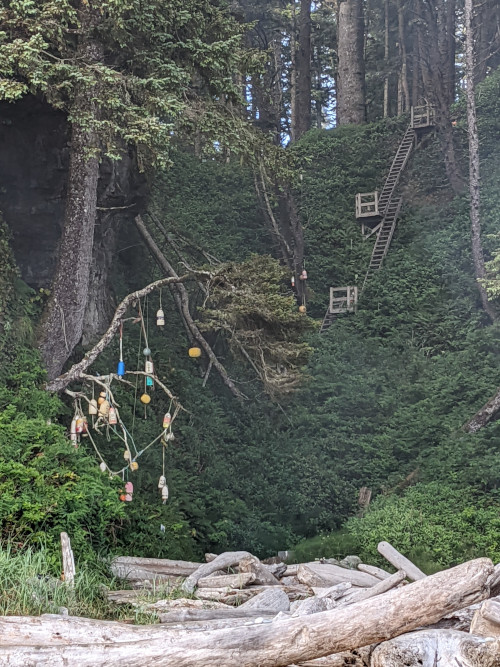
Buoys hanging in trees marked the trail into the higher forest...
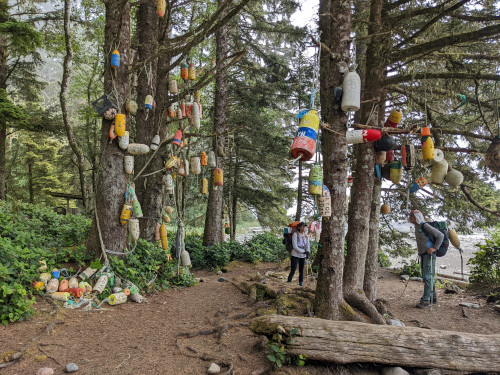
Or, they were just buoys in trees.
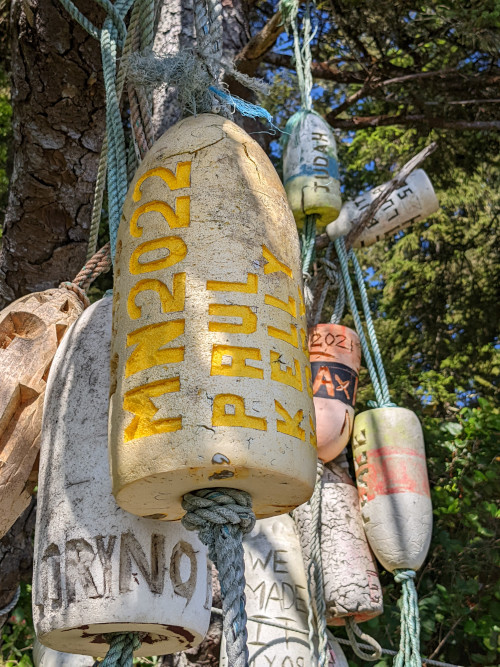
So, we added one found on the beach.

All the campsites were very nice.

So were the toilets at each camp.
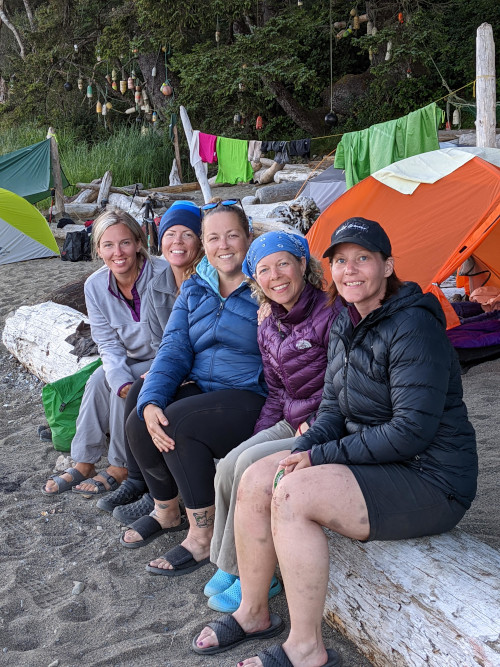
We made some friends.
And enjoyed so many things along the way...
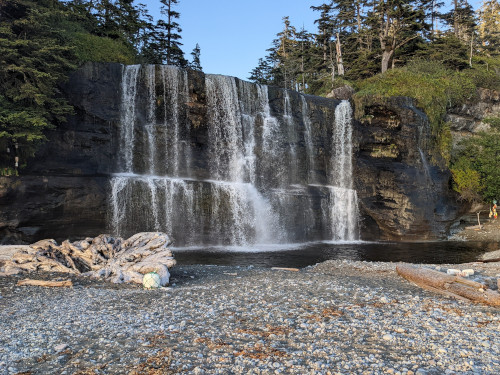

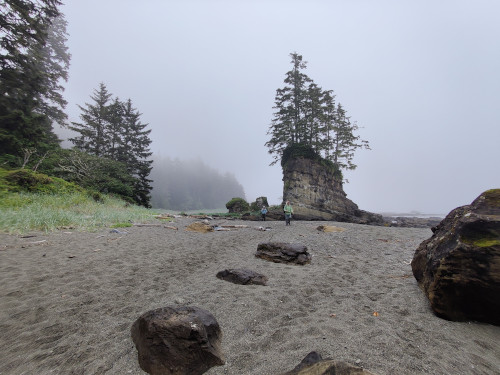

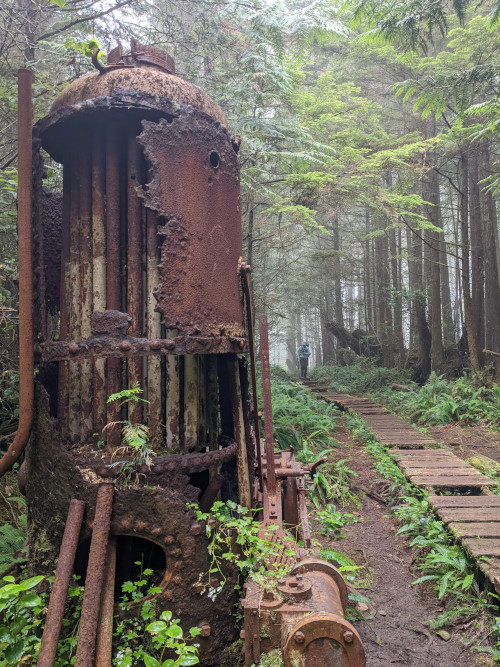
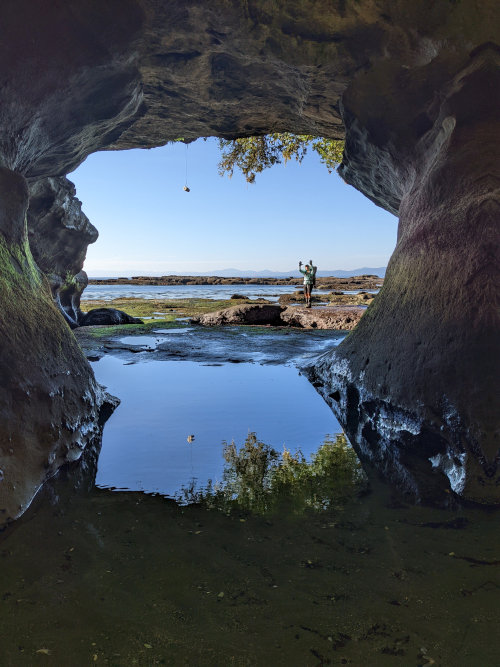
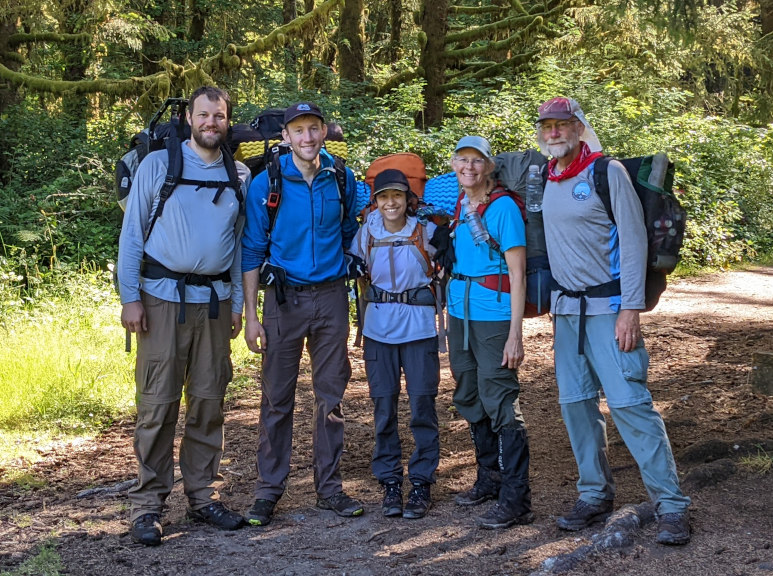
Until We Reached the End
Posted: 08/03/2022
Older Posts Newer Posts
Find more Hiking Resources at www.HikingDude.com


Follow Me
Recent Comments